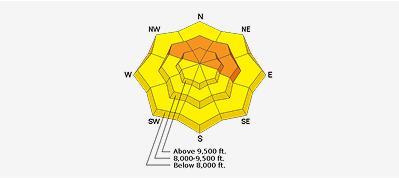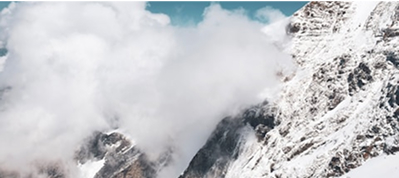Observation Date
12/28/2019
Observer Name
Peter Donner
Region
Salt Lake
Location Name or Route
Peak 9661
Comments
Today (12/28) was another of many consecutive days touring in Porter Fork.
In general, the snowpack is settling, compacting and strengthening. I’m feeling very good about the overall stability and beginning to poke into steeper terrain. The pack is over 4 feet deep at around 9000 feet, with October snow still present on the north half of the compass. As a general statement, the basal facets seem to be compacting, rounding and strengthening.
Paul Diegel reported a snowpack of 135 cm at 9000 feet in West Porter on 12/26 with relatively strong snow above 15 cm of relatively weak October snow. This compares to Greg Gagne’s report from West Porter on 12/18 of 125 cm at 8700 feet, with relatively strong snow on top of 25 cm of relatively weak October snow. This suggests the October snow has compacted about 10 cm, from 25 cm to 15 cm in the last week, which is my general sense of what’s happening. Paul did not report the crust above the October snow Greg reported was rapidly decomposing. I think the crust is still there in many locations but much less pronounced now than a month ago.
Today’s outing was up the summer trail to Porter Pass, then west along the ridgeline to Peak 9661. I did 1 run south off the peak into Mill B North in Big Cottonwood dropping to an elevation of about 8500 feet. The pack in upper Mill B North is between 3 and 4 feet deep and what many people like to call facet crust sandwich. Under a heavy load of new snow it could avalanche in steeper terrain, particularly if provoked by a human.
My home run was north off the peak into the east chute of the Icebox, which was the site of an accident involving two unidentified males, requiring a trip to the emergency room for one of them, last season, 12/8/2018. I’ve skied the line about 200 times over the years and it is what I call know to go terrain. I’ve been following it since Thanksgiving and it has been closed for me until a few days ago when I put it on standby. It’s difficult to follow closely without getting on belay, which I have not done. From a distance, my theory was that it has avalanched multiple times, beginning late in the Thanksgiving storm cycle.
Photo is standing in the start zone looking down the path. My theory turned out to be correct. The start zone has between 2 and 4 feet of snow that is not cohesive enough to constitute a slab. There is still October snow present but the set-up is so rotten it avalanches or sluffs with each storm. Lower in the path the pack is dense pencil 1 finger hard debris underneath soft sluff and storm snow, actually quite good skiing. The line is generally concave so the compacted debris lower in the path is providing compressive support to the steeper snow at the top.
My general feeling on avalanche hazard is that slides are somewhere between unlikely and possible in steep north facing mid and upper elevation terrain with October snow on the ground. For example, I don’t think it’s possible for a human to trigger an avalanche in the east chute of the Icebox. None of the terrain in Porter Fork is closed for me; about 99% is open no worry center punch; the remaining 1% is steep nooks and crannies I’ve got on standby. Examples of my standby terrain include Davis Gully and the Main Line off the peak of Gobbler’s Knob. These are both steep northfacing paths holding October snow that are wind loaded and appear to have avalanched at various times since Thanksgiving.
I’m calling the hazard today low because I think avalanches are unlikely except in radical terrain. The October snow is still a variable I’m mindful of but it seems dormant as a weak layer at this point. I expect it could be reactivated in steeper terrain with a significant storm.
NWS forecast for upper Porter Fork tomorrow (12/29) is light wind and snow. If this verifies, I expect the hazard will be low.

Today's Observed Danger Rating
Low
Tomorrows Estimated Danger Rating
Low
Coordinates






